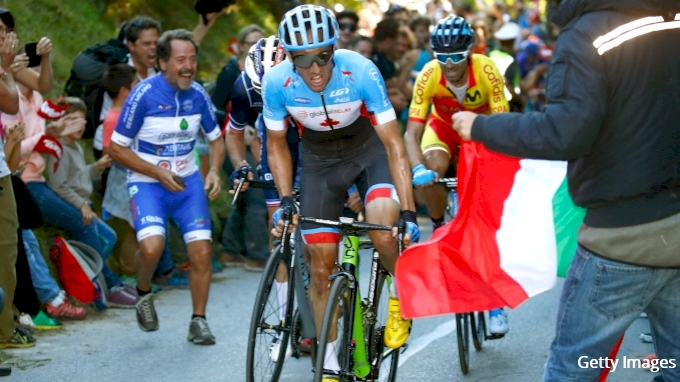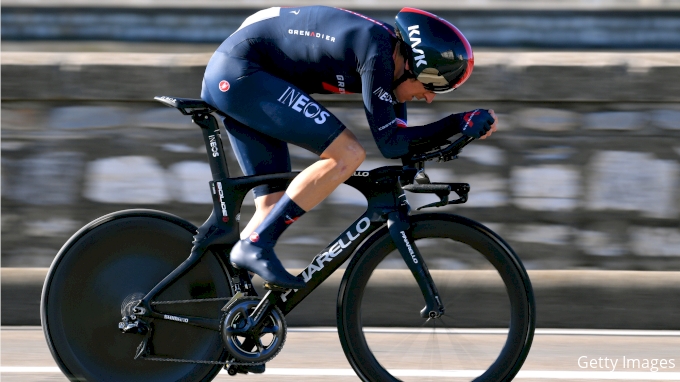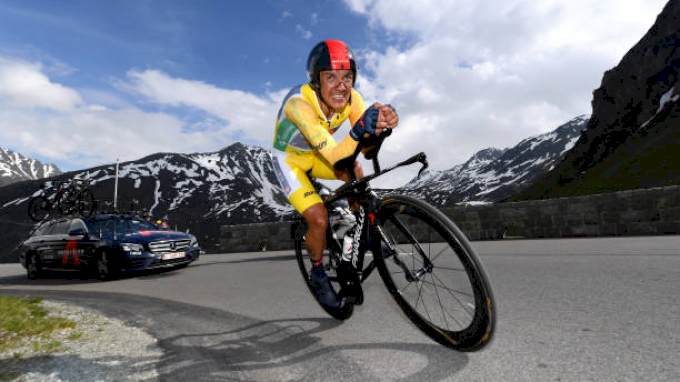A Complete Guide To Watching The 2021 Tour de France
A Complete Guide To Watching The 2021 Tour de France
From fans to casual viewers, the Tour de France is the peak of sports entertainment. Here's how to keep up with the action in the United States and Canada.

Die-hard cycling fans live for the epic three weeks of racing that engulfs France every summer. The biggest race in cycling, also happens to be one of the biggest sporting events in the world and is enjoyed by far more people than just hardcore cycling fans.
If you are new to Tour de France, keeping up with a three-week long bike race can seem like a daunting task, but if you are subscribed to Flobikes.com, you can watch replays, highlights and exclusive content on demand, at any time of the day from your desktop, smart TV and mobile app.
Join PRO to watch the 2021 Tour de France live and on demand in Canada on FloBikes. In addition to the live broadcast, exclusive highlights and content will be available to our worldwide audience!
There is a lot going on in the Tour de France. There are 21 individual stages which are fought out on a daily basis, as well as multiple overall competitions, which unfold in slow motion throughout the course of the entire race. The scale of the event can be difficult to take in at first, but follow this guide and you might become a "Tour-junkie" like the rest of us!
The 2021 Tour Starts In June!
In 2021, to accommodate the Tokyo Olympics’ cycling events, the Tour de France has been moved up by one week, beginning on Saturday, June 26 and finishing on Sunday, July 18.
Interestingly, the Men’s Olympic road race is on Saturday, July 24, which leaves only five days between the two marquee cycling events of 2021. Five days is not really enough time for the athletes to travel to Japan, adjust to the time change and to recover from the three grueling weeks of racing, which brings up some interesting questions.

Michael Woods of Canada will have to carefully balance his Tour de France and Olympic ambitions.
The rumour is that some riders may quit the Tour de France early in order to recover for the Olympic road race. This would be very contentious within the teams as each team member will be critical to their success on any given day.
Riders have battled through illness, fatigue and even broken bones to finish all 21 stages of the Tour de France. Simply finishing the race in an accomplishment. Leaving early for any reason other than serious injury is traditionally looked down upon from within the pro cycling circle.
2021 Tour de France Course Overview
The 2021 Tour de France route starts in the Northwest of France in the Bretagne region. For the next three weeks, it follows a clockwise route, visiting the Alps, followed by the Pyrenees before arriving in Paris for the traditional sprint finish on the Champs-Élysées.
TIP: Each year, the route alternates the direction of the race…in 2022, it will be Pyrenees first, then Alps to Paris.

Tom Dumoulin braving the elements during the Tour de France's 2016 Andorra visit.
This year, the race stays in France, albeit with a short excursion into Andorra in the Pyrenees. Essentially, the race always breaks up into 3 segments separated by 2 rest days. For 2021, the dates break down like this:
Week 1
- June 26 – July 4 (9 race days)
- From Bretagne to Tignes in the Italian Alps
- July 5 is the first rest day in Tignes on the Italian border
Week 2
- July 6 – July 11 (6 race days)
- From the Alps to the Pyrenees
- July 12 is the second rest day in Andorra
Week 3
- July 13 – 18 (6 race days)
- Final Pyrenees stages and transfer to Paris
Doing an analysis of the stages, much like the Team Directors do, we look for the key areas where there could be difficulty and potential time gaps:
- Bretagne hills and cross winds
- 6 mountain stages with 3 summit finishes
- 20 categorized climbs (Cat 2, 1, HC) – below the average Tour de France
- 2 individual Time Trials – total of 58km – higher than average
A review of this data, points to the overall winner likely being less of a climbing specialist and more of an all-rounder. Since the teams are now only made up of eight riders (used to be nine), the leader will need a strong group of domestiques domestiques (helpers) who can protect their leader in the cross wind stretches but also position him at the front before the climbs of mountain stages.

The time trials in this year's Tour should favor a general classification rider such as Geraint Thomas.
Tour de France Strategy
Teams go into the Tour de France with a plan. Sometimes, not always obvious, but there is a plan that each team is trying to act upon. There are usually 3 ways that teams approach the Tour de France:
- Hunt for individual stage wins in one way or another. Either flat stages for pure sprinters, hilly stages for rouleur style riders or pure climbing stages.
OR
- Focus on the overall General Classification (GC), the Yellow jersey. All members of the team are focussed on supporting one leader, all in.
OR
- Win one of the leaders’ jersey categories during the race and ultimately on the podium in Paris at the end of the Tour:
- Green – Sprint leader
- Polka Dot – Climbing leader
- White – Rookie leader
- Teams classification
Some teams may even try to hedge their bets and chase a couple of these options during the Tour and adjust their strategy along the way. If their lead rider crashes out for instance, they will have to change their strategy on the fly and reset their goals based on the capabilities of the riders that they have left in the race.
Prep Races Reveal Who Is On Form
Personally, I like to pay very close attention during the weeks leading up to the Tour. How the teams behave in the month of June is sheds light on the upcoming battle.
Traditionally, teams use the Criterium du Dauphine and the Tour de Suisse as final preparation for the Tour de France.
Teams generally enter their short-listed riders into one of the two mountainous stage races, and build their final eight-man Tour roster based on the performances seen during Suisse and the Dauphine.

Other riders such as Primoz Roglic (Jumbo-Visma) have decided not race at all in the months before the Tour starts and focus on specific training efforts as well as training camps at altitude to get the benefits of oxygen deprivation that boost their red blood cell count.
Who Will Win?
Ineos stamped their authority on both the Criterium du Dauphine and the Tour de Suisse with Richie Porte and Richard Carapaz taking the respective wins. Ineos is the perennial Tour de France heavyweight, having won the Tour seven times in the last ten years.

Defending champion Tadej Pogacar and runner up Primoz Roglic have chosen to not show their cards in the Tour de France prep races. Ineos appears poised to have a successful summer in France, but it is never a straightforward ride to Paris.
Tune in to FloBikes to watch the most dramatic three-weeks of cycling live and on demand in Canada this June!
Join PRO to watch the 2021 Tour de France live and on demand in Canada on FloBikes. In addition to the live broadcast, exclusive highlights and content will be available to our worldwide audience!